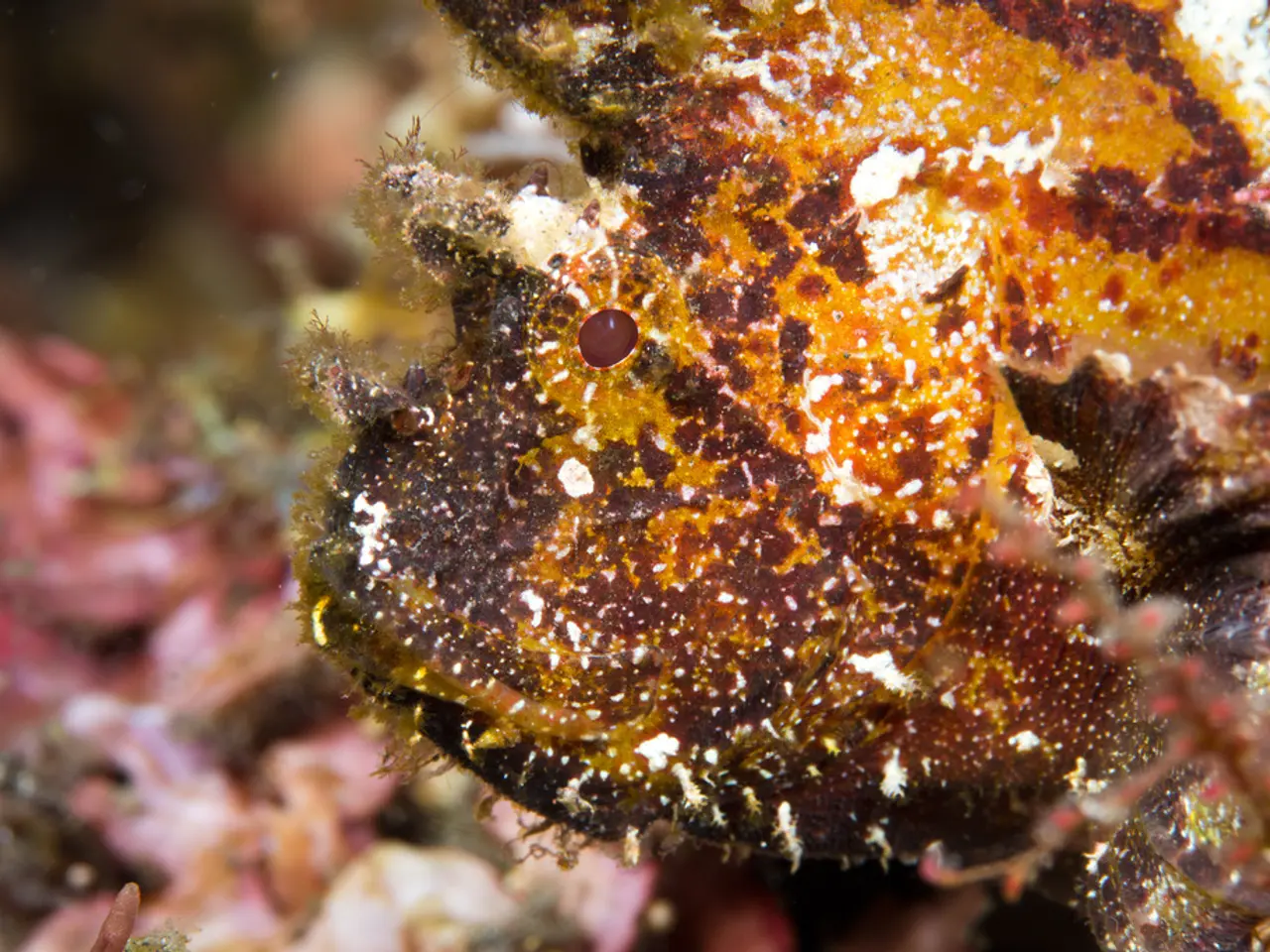Underwater Photography: Employing Strobe Lights
In the captivating world of underwater photography, lighting plays a crucial role in capturing stunning images. One of the most popular techniques involves the use of TTL (Through-The-Lens) underwater strobes.
TTL underwater strobes function by sending a pre-flash that the camera measures to calculate the precise full power output needed for correct exposure. This pre-flash reading is used to adapt the strobe output to varying underwater lighting conditions automatically. This clever system conserves battery life and reduces backscatter from overly strong lighting.
When a photographer is shooting macro underwater, they might choose to use one strobe, lighting their subject from the top to mimic the angle from the sun, a combination of front and side lighting. This technique helps to create a more natural look, emphasising colour and vibrance.
For those seeking to create more depth and shadows in their macro photos, using two strobes on different power settings could be the solution. This method allows for a balanced interplay of light and shadow, enhancing the details and texture of the subject.
Hard light, strong and directional, creates distinct shadows and high contrast, while soft light, diffuse and coming from various directions, produces soft shadows and less contrast. The choice between hard and soft light depends on the desired effect in the final image.
When TTL is used with strobes, a pre-flash is fired first to measure exposure. This pre-flash is invisible to the diver and happens very quickly before the main flash fires, ensuring the final image is exposed with proper lighting without the need for manual adjustment of the strobe power.
Gelling strobes can be used to change the colour temperature of your strobe, useful for slightly warming or cooling your subjects, and for achieving the correct colour temperature of your background. The Saga ring flash, an interesting non-TTL compatible option, must be used on manual power settings.
Ring flashes, known for their shadow-free macro photos, emit light directly from the front, causing shadows to fall directly behind the subject. These flashes are particularly useful when capturing intricate details in close-up shots.
In underwater photography, strobes are often used to light subjects, with one, two, or even three or four strobes often employed. The rule of strobe falloff states that the light from a strobe decreases in power proportional to the square of the distance from the strobe.
Unless the water is very clear and the subject is very close, the internal flash on a camera will produce backscatter. To avoid this, external strobes are essential.
When shooting in different water temperatures, coloured gels can be used to lower the colour temperature of your strobes, resulting in warmer lighting, and deeper blues when shooting in tropical water. Using a diffuser on only one strobe can create a softer effect, lower contrast, and soften shadows, while reducing the power of a strobe.
A snoot, a tool that allows you to place light exactly where you want it, in a small area, is another useful accessory in underwater photography.
For more in-depth information on ring flashes, Alex Mustard's article in Underwater Photography magazine issue #47 is highly recommended.
- In the underwater photography realm, TTL (Through-The-Lens) underwater strobes are popular due to their ability to send a pre-flash and calculate the correct exposure.
- TTL underwater strobes adapt the strobe output to varying underwater lighting conditions automatically, conserving battery life and reducing backscatter.
- When shooting macro underwater, one stroke may be used to light the subject from the top, mimicking the angle from the sun, or a combination of front and side lighting for a more natural look.
- To create more depth and shadows in macro photos, two strobes on different power settings could be used, enhancing details and texture of the subject.
- Hard light creates distinct shadows and high contrast, while soft light produces soft shadows and less contrast, depending on the desired effect in the final image.
- When TTL is used with strobes, a pre-flash is fired first to measure exposure, ensuring the final image is exposed with proper lighting without the need for manual adjustment of the strobe power.
- Gelling strobes can change the colour temperature of your strobe, useful for warming or cooling subjects, and achieving the correct colour temperature of your background.
- In underwater photography, strobes are often used to light subjects, and tools like a snoot, that place light exactly where you want it, are useful accessories for controlling light distribution.




